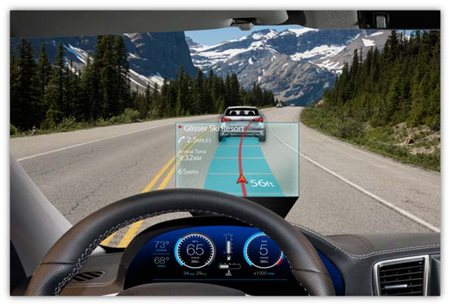SSZTAK4 december 2016 DLP2010 , DLP3010 , DLP4710

Demand for automotive displays that go beyond traditional dashboards, instrument clusters and center cluster is growing as head-up display (HUD) innovation accelerates from a proven concept to commercial reality.
Integrated HUD solutions offered by original equipment manufacturers (OEMs) continue to appear in new automobiles. Aftermarket HUD solutions for vehicles already on the road are another potentially lucrative commercial opportunity. In fact, analyst firm IHS predicts that overall global revenue from HUDs and other automotive display solutions will grow by 11 percent, reaching $18.6 billion by the end of 2021.
Products like Navdy, an augmented reality display device, are giving drivers a glimpse into the future of aftermarket HUD. Their solution connects to a smartphone and displays driving directions in the driver’s line of sight, while also providing hands-free communication and entertainment controls.
However, as this technology is still relatively new, limited resources exist for systems engineers and designers looking to develop their own aftermarket HUD solution. With that in mind, I pulled together some helpful information in a new application note to help developers get started on aftermarket HUD designs. This technical document details the critical design considerations and tradeoffs required to speed up the process of developing an aftermarket HUD solution.
At TI, we offer a wide variety of DLP® digital micromirror devices (DMDs), including chips that enable aftermarket HUD display applications. Our DLP Pico™ chips, for example, can be utilized in space constrained systems due to their small size, low power usage and economical cost.
Interested in developing an aftermarket HUD solution? See below for resources to get you started in your next design.
Resources
- Get started with our TI DLP Pico Technology for Aftermarket Head-Up Displays
- Check out our Getting Started With TI DLP Display Technology
- Read about how TI technology is changing the driving experience
- Read our DLPC343X display controller data sheets: DLP2010, DLP3010, and DLP4710.
- View production ready optical modules